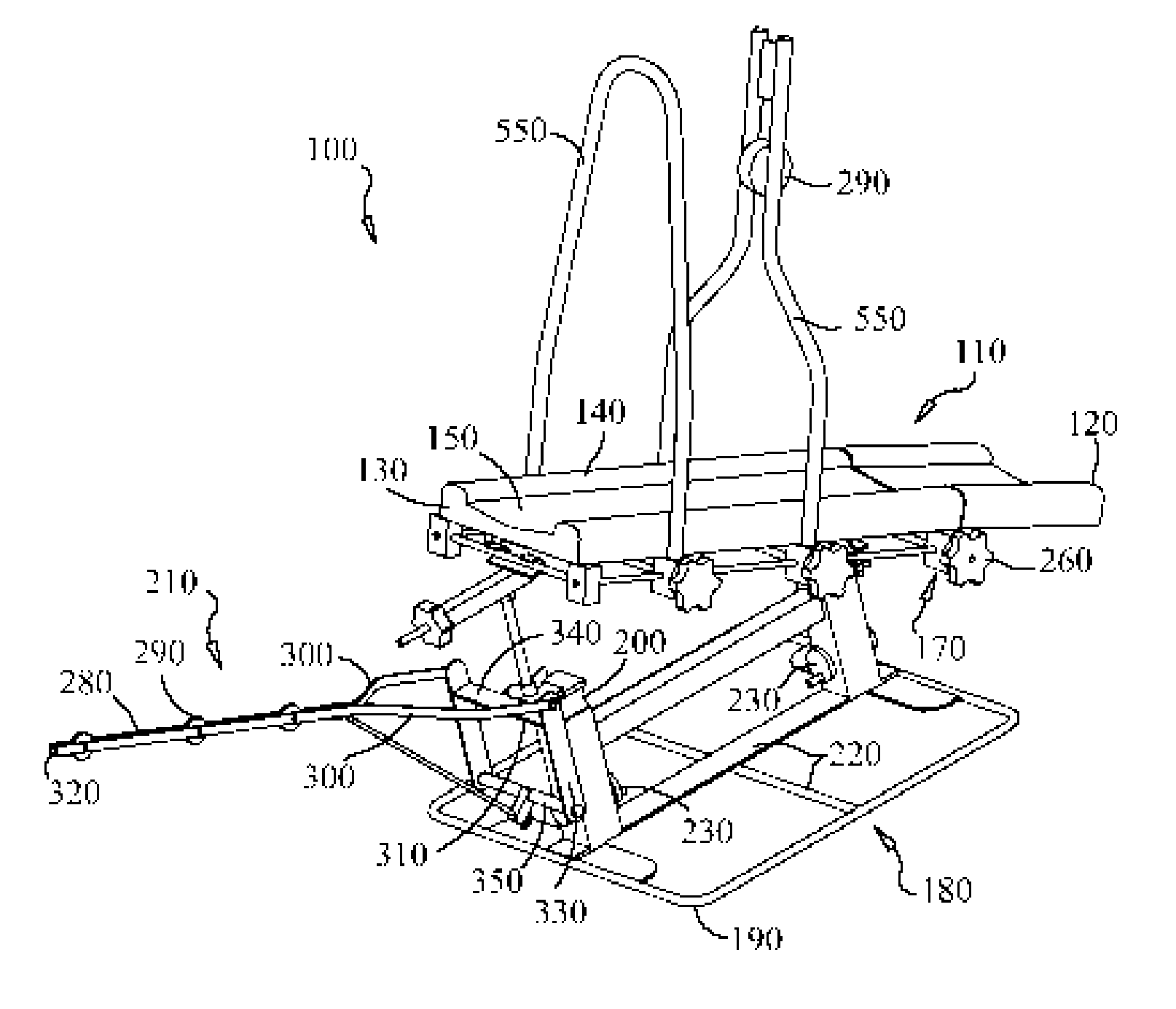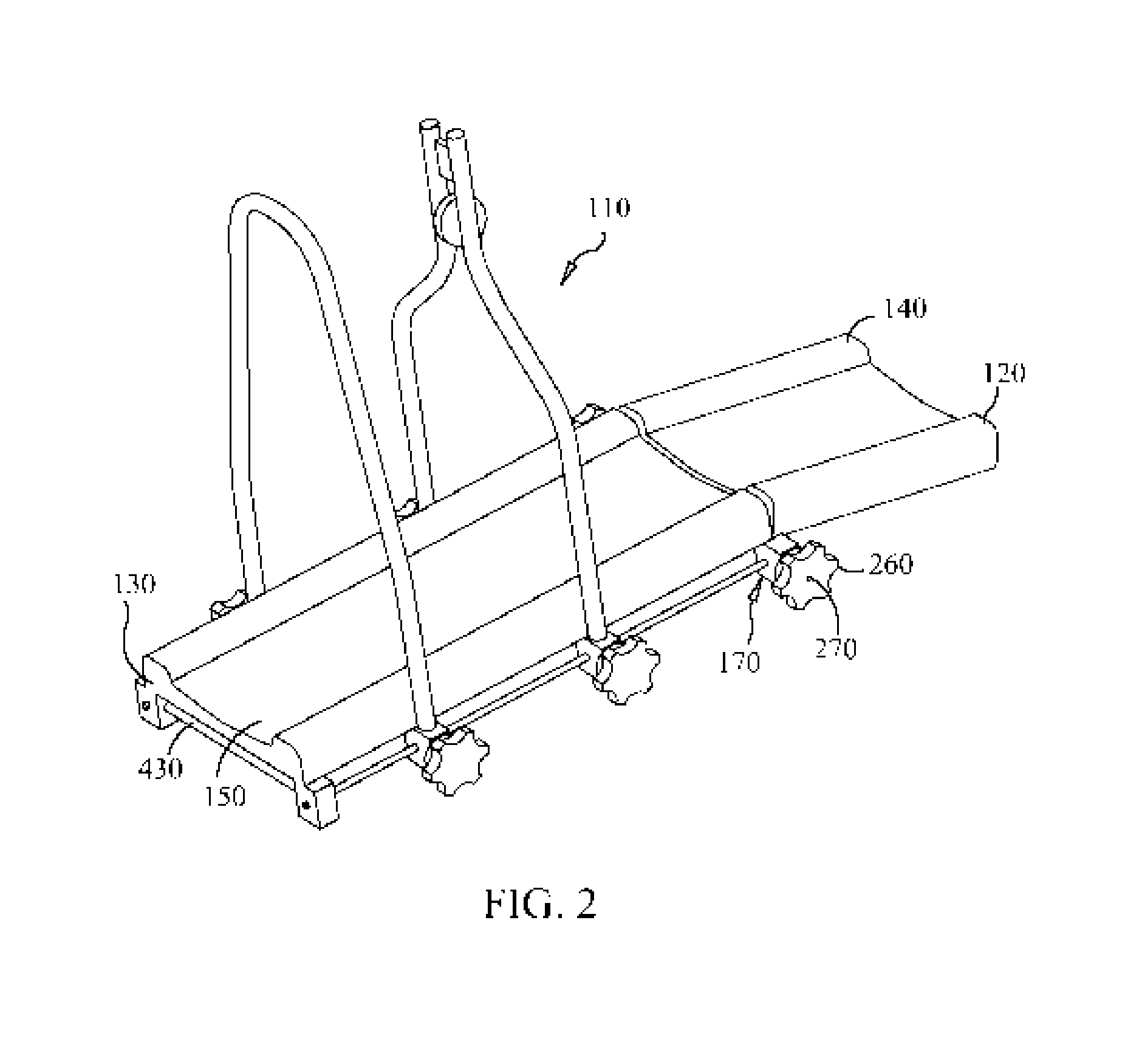Portable splint system
a splint system and portable technology, applied in the field of traction splints, can solve the problems of inconvenient patient treatment of many portable splint systems do not allow the flexibility and customization of overhead systems, and the patient is not suitable for treating patients with fused knees. , to achieve the effect of reducing the chance of fracture site collapse, reducing bleeding, and improving patient hygien
- Summary
- Abstract
- Description
- Claims
- Application Information
AI Technical Summary
Benefits of technology
Problems solved by technology
Method used
Image
Examples
Embodiment Construction
[0032]While this invention is susceptible of embodiments in many different forms, there are shown in the drawings and will herein be described in detail, preferred embodiments of the invention with the understanding that the present disclosure is to be considered as an exemplification of the principles of the invention and is not intended to limit the broad aspect of the invention to the embodiments illustrated.
[0033]The portable splint system 100 of the present invention has a limb supporting splint 110 having a proximal end 120 and a distal end 130. FIG. 1 shows a portable splint system 100 according to the present invention. The limb supporting splint 110 has a least two sections, each section has a substantially continuous cover plate 140, each cover plate 140 having a concave contoured upper surface 150 for cradling a splinted limb 160. A locking hinge 170 connects the sections of the limb supporting splint 110. The limb supporting splint 110 is suitable for use in a bed or ove...
PUM
 Login to View More
Login to View More Abstract
Description
Claims
Application Information
 Login to View More
Login to View More - R&D
- Intellectual Property
- Life Sciences
- Materials
- Tech Scout
- Unparalleled Data Quality
- Higher Quality Content
- 60% Fewer Hallucinations
Browse by: Latest US Patents, China's latest patents, Technical Efficacy Thesaurus, Application Domain, Technology Topic, Popular Technical Reports.
© 2025 PatSnap. All rights reserved.Legal|Privacy policy|Modern Slavery Act Transparency Statement|Sitemap|About US| Contact US: help@patsnap.com



